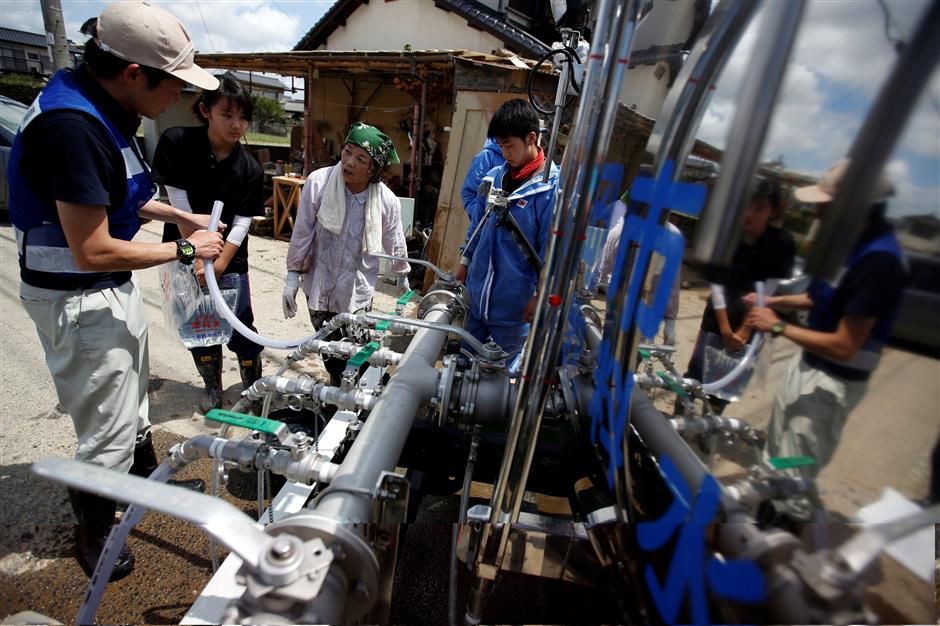House-to-house search after flooding in Japan

Local residents receive an emergency water supply a flood-hit area in Mabi town in Kurashiki, Okayama Prefecture, Japan, yesterday.
Hopes of finding survivors were fading yesterday as rescue workers carried out house-to-house searches after days of deadly floods and landslides that have claimed 156 lives in Japan’s worst weather-related disaster for decades.
The record downpours that began last week have stopped and receding flood waters have laid bare the destruction that has cut a swathe through the west of the country.
In the city of Kurashiki, the flooding engulfed entire districts at one point, forcing some people to their rooftops to wait for rescue.
Rescue workers were going door-to-door, looking for survivors — or victims — of the disaster.
“It’s what we call a grid operation, where we are checking every single house to see if there are people still trapped inside them,” an official with the local Okayama prefecture government said.
“We know it’s a race against time, we are trying as hard as we can.”
As night fell, rescuers continued searches, “but we still don’t know if we will carry out the operation around the clock,” said Akiko Harada, a spokeswoman at the disaster management section of Hiroshima, where 14 people were still unaccounted for.
In the Mabi district of Kurashiki, the water left behind a fine yellow silt that has transformed the area into moonscape.
Cars driving through kicked up clouds of dust. People walking around wore medical masks or covered their mouths with small towels to protect themselves against the particulates.
Stores were still closed, and inside one barber’s shop the red sofas, customer chairs, and standing hair dryers were all covered with the same silt.
It is Japan’s deadliest weather-related disaster in more than three decades, and has sparked national grief.
Top government spokesman Yoshihide Suga said yesterday that at least 156 people had been killed. Media reports said dozens more were missing and the toll was expected to rise further.
Around 75,000 police, firemen and troops have been deployed in the search and rescue operation across parts of central and western Japan, Suga said, warning that hot weather posed new risks.
Thousands of people remain in shelters, and local authorities in some areas were offering drinking water and bathing services for those without their own supply.
The government said it would tap around US$20 million in reserve funds to provide aid to those affected by the disaster.
And even with the rains over, the risk of flooding remained, with the town of Fuchu in Hiroshima issuing a new evacuation order as a local river burst its banks.
“Driftwood and dirt has piled up... and now the water has started overflowing from the river,” a local fire department spokesman said.
“We are on high alert,” he added.















